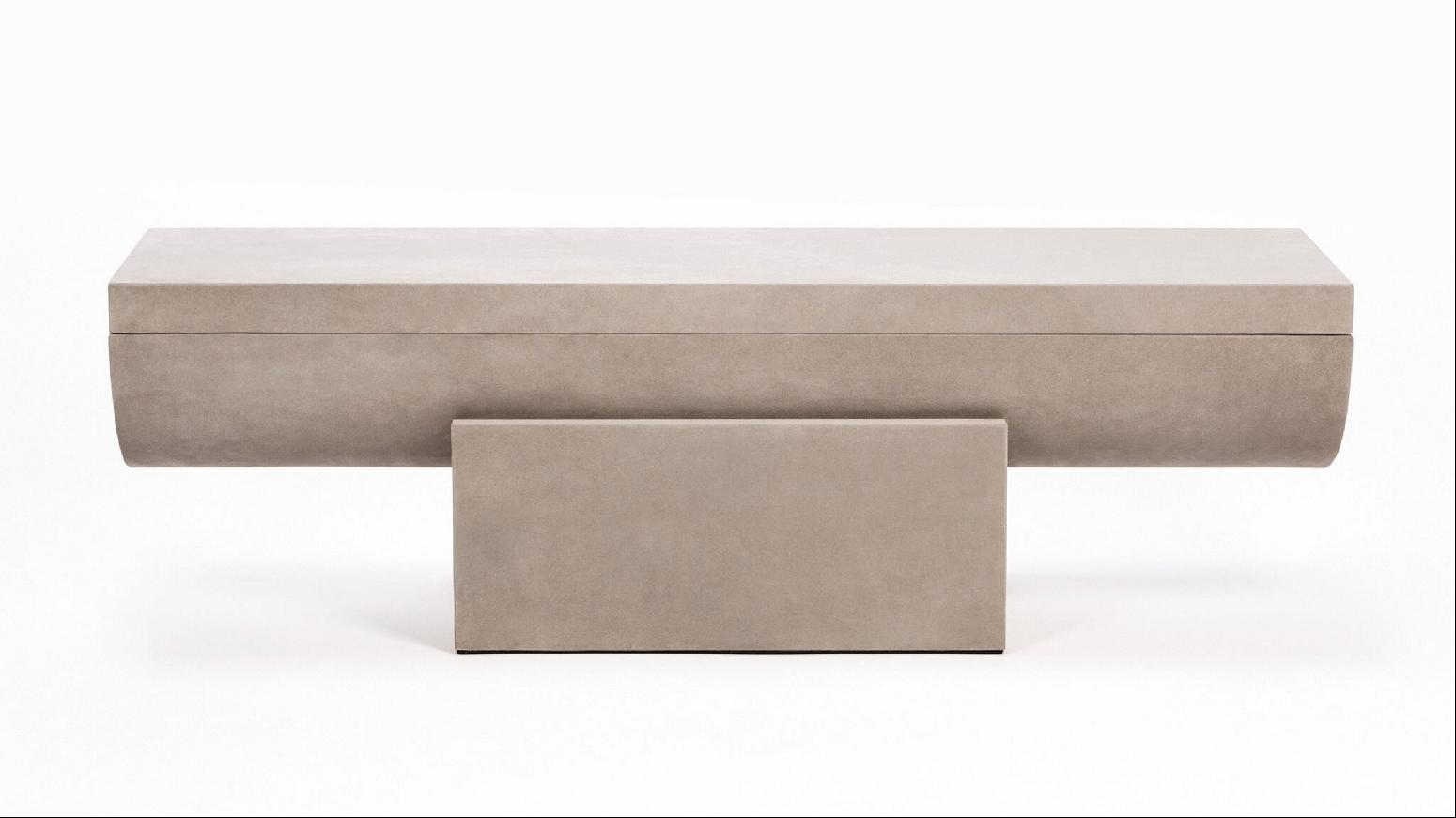
By Boldizar Senteski
I grew up in Budapest, a city where architecturally, the old and new converge in unique ways. It wasn’t until much later that I realised how this rich history had influenced my work and design language — especially the Soviet-era Brutalist buildings.

Decorating Brutalist spaces — such as this recently completed three-bedroom villa in Son Vida, just outside Palma de Mallorca, on the market for €7.3mn — can be challenging. Here, using the example of the villa’s hall, I propose some tips from my vantage point as a designer, using a series of modern collectible pieces to integrate striking design elements while maintaining a sense of comfort and harmony.
Expose raw materials

When we think about Brutalism, we typically envisage rugged concrete surfaces, robust forms and exposed structures. A great example of this approach can be found in the creations of Martin Laforet. In this console, a concrete mould has been used to cast bronze, with the mould subsequently being used as a plinth for the bronze form. It’s a great way to either incorporate this aesthetic into your interior or, as would be the case with this space in Mallorca, create an intriguing dialogue with the exposed concrete walls.
Decorate with functional pieces

I’m fascinated by the connection between Brutalism and functionality and to engage with this, I would suggest introducing decorative elements that also have a practical purpose. Take for example, this hammered brass wall sconce created by Mexican artist Manu Bañó, which is both an artwork and light that would introduce beautiful ambient lighting to further illuminate the hall.
Bring nature in

Consider adding natural counterpoints to spaces in Brutalist buildings, as they can often be quite austere. This coffee table by Chilean artist Sebastian Errazuriz, combining actual and handmade branches, evokes a sense of nature reclaiming some long-abandoned place.
Look for quality in the details

When choosing furniture for your space, pay close attention to small details, the quality and craftsmanship. Modern interpretations of Brutalism can often be loud and overt but the key lies in the subtle features. At first glance, this bench by Stéphane Parmentier might appear to be constructed from concrete, due to its puritan monolithic form and structure. Closer inspection shows that it is covered in a suede leather — achieving a harmonious blend of rugged beauty and luxury thanks to the soft, tactile material. It’s ideal for a luxury setting such as the Mallorcan villa and would sit beautifully in place of the cabinet in the hall, offering a quiet place to enjoy the surrounding scenery and architecture.
Find an iconic centrepiece

Never be afraid to make a statement. Balancing Brutalist elements while maintaining comfort and harmony is great, but integrating a striking centrepiece that grabs your attention will give the interior an edge. Gomli by Israeli designer Ron Arad, for example, is an iconic, one-of-a-kind piece — I am still trying to wrap my head around it.
Photography: Jose Luis Zarauz/John Taylor Palma de Mallorca; Carpenter Workshop Gallery; Sebastian Errazuriz Studio; Galerie Philla; StudioTwentySeven; Ron Arad and Associates

